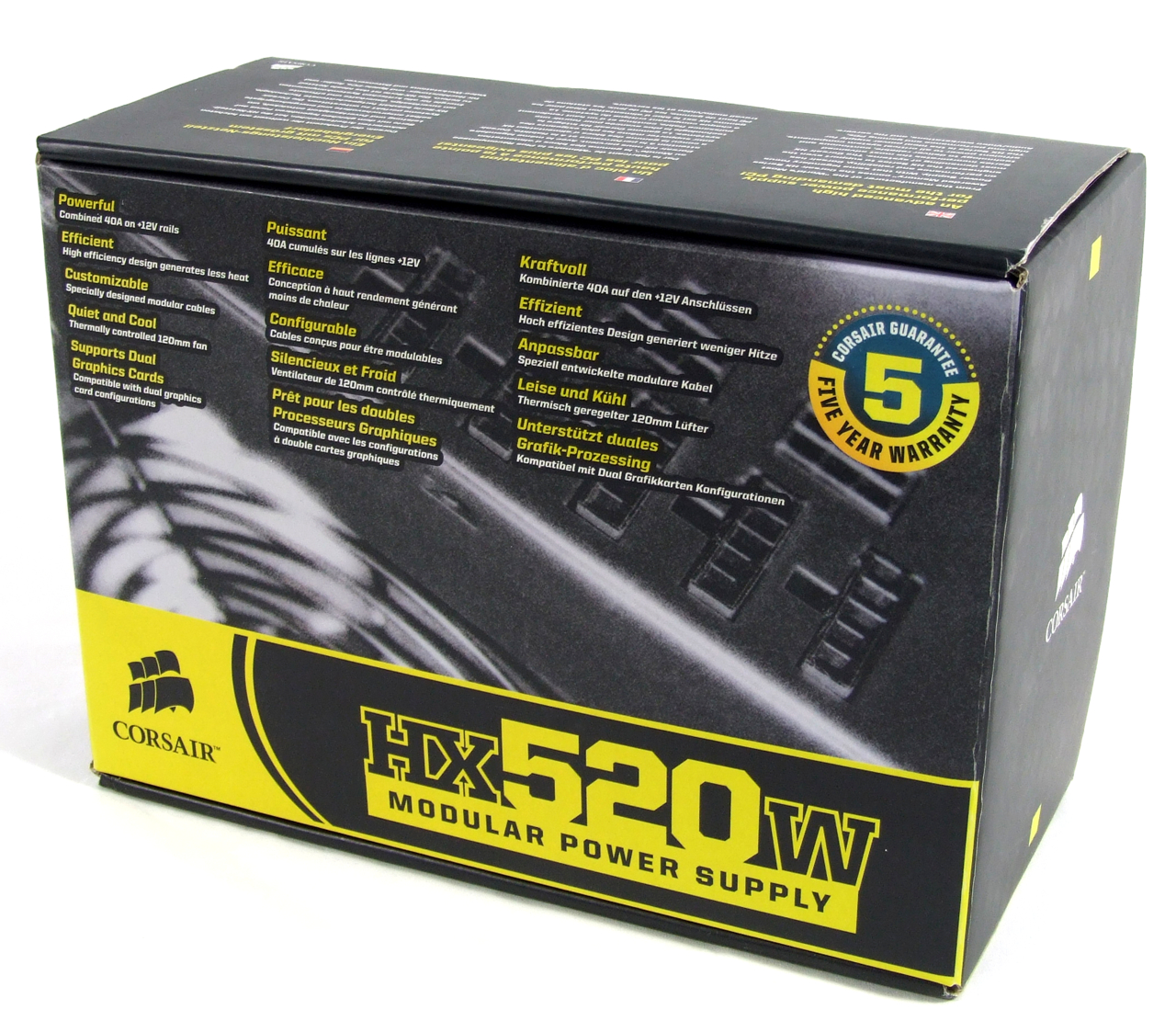Power Supply Roundup: Part II
Efficiency
The maximum level of efficiency for this model is achieved at half of the maximum load, where we measured 86%. Under full load, the value drops to about 84.5%, while at low loads (20%), the power supply achieves a comparatively low efficiency of 82.4%—the lowest in our test field. Here, we need to take into account the fact that the design of this power supply unit is older than that of the other models.
In testing with our 35 watt PC, the efficiency sunk to 67.9%, but in comparison with the competition, that was not a bad result.
The standby consumption of 0.70 watts with no load is respectable, and even with load on the standby cable, the unit still does alright. A power consumption of 3.93 watts with a load of 2.5 watts is good when compared to the competition.
The Corsair HX520W can be purchased from retailers at a price of around $120. And because it comes from Corsair, local availability is plentiful.
Corsair HX520W
The "veteran" amongst the power supplies can still keep up with the competition.
- Positive
- Negative
- High efficiency at full loadQuietGood modular cables
- Low efficiency under low loads
Get Tom's Hardware's best news and in-depth reviews, straight to your inbox.
-
bf2gameplaya I use the Enermax Modu82+ 625W version (same design) and I can attest the 12v rails are rock solid, they just don't sag or dip under any load.Reply
The fan is interesting, I am used to the variable control knob but I do not miss it as the fan is silent under all but the heaviest sustained load and then it is audible, but not loud. It is a 120MM fan (quieter) but it is clear (louder). The fans' RPM monitoring lead is a must for my system board monitoring program as I could adjust other fans and settings based on the PSU fan RPM if I wanted, but as I run a near silent system, I have no need.
I wish it was $50 cheaper, but you get your money's worth, no mistaking that.
-
mafj Hi,Reply
I sill miss some bits.
I would like to see how overcurrent and overheat protection works, whether mains spikes can damage the power supply.
Whether joining +5V with +12V rail (as may happen when e.g. CDROM fails) will burn the other components.
And noise/heat level. -
bobbknight Yep just about as informative as the first part, IE. not very.Reply
Unless you put the thing under load and oscilloscope the outputs for ripple and open it up to see the type of parts used and the construction quality. reviews of this type are next to meaningless. -
jeffunit "But there is no 82Plus standard."Reply
Clearly these folks don't know about the different colors of the 80+
program. The enermax is rated at the bronze level which must be 82% efficient. There is also the silver and gold level rating.
google is your friend. -
jeffunit "For what it’s worth, that’s good enough to qualify the supply for the 80Plus Bronze certification, if Enermax pursued it."Reply
Not only did enermax pursue it, but if you go to 80plus.org, you will
see that they are already certified at the bronze level. (80plus.org is
down right now, or I would provide a url showing it.)
-
jeffunit If you go to enermax's site, http://www.enermaxusa.com/catalog/index.php?cPath=21_56Reply
they have a big honking picture of the 80+ bronze certificate and the 6 power supplies it applies to. I fear tomshardware has not done their homework.
Other than owning a 5 year old Enermax, I have nothing to do with the
company. I have 5 antec earthwatts powersupplies, and a seasonic power supply in my 80+ collection. -
jeffunit Listing "Confusing “82+” specification in the product name" as a negative, clearly shows where the confusion lies, and it isn't with enermax.Reply
The 80+ standard is several years old. The newer colored standards of bronze, silver, and gold are newer, but that is the wonder of technology.
For a technology web site, keeping up with newer things such as standards is necessary.

